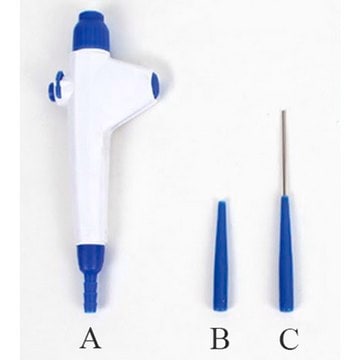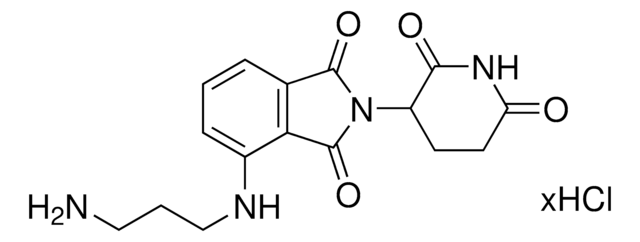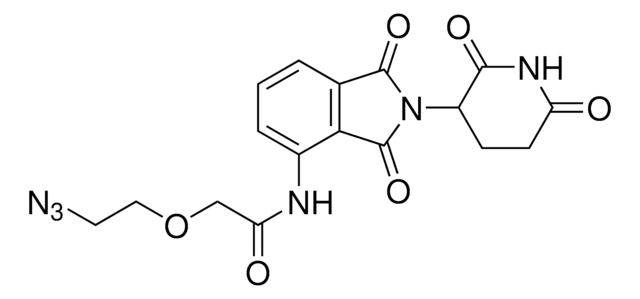929379
Opto-thalidomide-O-acetamide-C4-NH2 hydrochloride
Sinônimo(s):
4,5-Dimethoxy-2-nitrobenzyl 3-(4-(2-((4-aminobutyl)amino)-2-oxoethoxy)-1,3-dioxoisoindolin-2-yl)-2,6-dioxopiperidine-1-carboxylate hydrochloride
About This Item
Produtos recomendados
ligand
thalidomide
Nível de qualidade
Formulário
powder
grupo funcional
amine
temperatura de armazenamento
2-8°C
cadeia de caracteres SMILES
COC1=CC(COC(N2C(CCC(N3C(C4=CC=CC(OCC(NCCCCN)=O)=C4C3=O)=O)C2=O)=O)=O)=C(C=C1OC)[N+]([O-])=O.Cl
InChI
1S/C29H31N5O12.ClH/c1-43-21-12-16(19(34(41)42)13-22(21)44-2)14-46-29(40)33-24(36)9-8-18(27(33)38)32-26(37)17-6-5-7-20(25(17)28(32)39)45-15-23(35)31-11-4-3-10-30;/h5-7,12-13,18H,3-4,8-11,14-15,30H2,1-2H3,(H,31,35);1H
chave InChI
SEKXAIYNMUPUDC-UHFFFAOYSA-N
Aplicação
Technology Spotlight: Degrader Building Blocks for Targeted Protein Degradation
Protein Degrader Building Blocks
Outras notas
Informações legais
Palavra indicadora
Warning
Frases de perigo
Declarações de precaução
Classificações de perigo
Acute Tox. 4 Oral - Repr. 2
Código de classe de armazenamento
11 - Combustible Solids
Classe de risco de água (WGK)
WGK 3
Ponto de fulgor (°F)
Not applicable
Ponto de fulgor (°C)
Not applicable
Escolha uma das versões mais recentes:
Certificados de análise (COA)
Não está vendo a versão correta?
Se precisar de uma versão específica, você pode procurar um certificado específico pelo número do lote ou da remessa.
Já possui este produto?
Encontre a documentação dos produtos que você adquiriu recentemente na biblioteca de documentos.
Active Filters
Nossa equipe de cientistas tem experiência em todas as áreas de pesquisa, incluindo Life Sciences, ciência de materiais, síntese química, cromatografia, química analítica e muitas outras.
Entre em contato com a assistência técnica
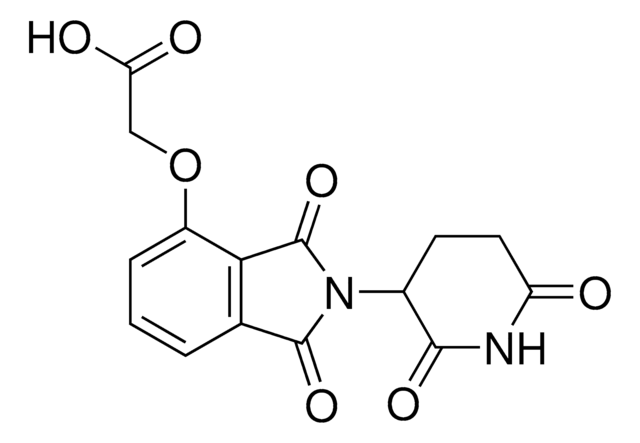
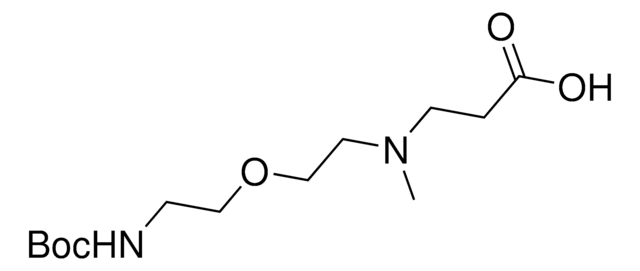
![3-[1,3-Dihydro-4-(5-hydroxy-1-pentyn-1-yl)-1-oxo-2H-isoindol-2-yl]-2,6-piperidinedione ≥95.0%](/deepweb/assets/sigmaaldrich/product/structures/165/184/ebc29f1b-f63f-4e48-afb5-b3aa4c69795a/640/ebc29f1b-f63f-4e48-afb5-b3aa4c69795a.png)
